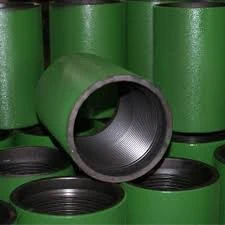- Afrikaans
- Albanian
- Amharic
- Arabic
- Armenian
- Azerbaijani
- Basque
- Belarusian
- Bengali
- Bosnian
- Bulgarian
- Catalan
- Cebuano
- Corsican
- Croatian
- Czech
- Danish
- Dutch
- English
- Esperanto
- Estonian
- Finnish
- French
- Frisian
- Galician
- Georgian
- German
- Greek
- Gujarati
- Haitian Creole
- hausa
- hawaiian
- Hebrew
- Hindi
- Miao
- Hungarian
- Icelandic
- igbo
- Indonesian
- irish
- Italian
- Japanese
- Javanese
- Kannada
- kazakh
- Khmer
- Rwandese
- Korean
- Kurdish
- Kyrgyz
- Lao
- Latin
- Latvian
- Lithuanian
- Luxembourgish
- Macedonian
- Malgashi
- Malay
- Malayalam
- Maltese
- Maori
- Marathi
- Mongolian
- Myanmar
- Nepali
- Norwegian
- Norwegian
- Occitan
- Pashto
- Persian
- Polish
- Portuguese
- Punjabi
- Romanian
- Russian
- Samoan
- Scottish Gaelic
- Serbian
- Sesotho
- Shona
- Sindhi
- Sinhala
- Slovak
- Slovenian
- Somali
- Spanish
- Sundanese
- Swahili
- Swedish
- Tagalog
- Tajik
- Tamil
- Tatar
- Telugu
- Thai
- Turkish
- Turkmen
- Ukrainian
- Urdu
- Uighur
- Uzbek
- Vietnamese
- Welsh
- Bantu
- Yiddish
- Yoruba
- Zulu
bull plug dimensions
Understanding Bull Plug Dimensions A Comprehensive Guide
Bull plugs are specialized components widely used in various industrial applications, particularly in the oil and gas sector, as well as in water treatment facilities and other systems that require the sealing off of pipelines. Understanding the dimensions and specifications of bull plugs is crucial for ensuring compatibility with existing systems and preventing leakages, which can lead to severe operational issues and safety hazards. This article provides an overview of bull plug dimensions, their significance, and the factors to consider when selecting the right plug for your needs.
What is a Bull Plug?
A bull plug is essentially a solid mechanical seal designed to close the end of a pipeline or fitting. The primary function of a bull plug is to block the flow of fluids, whether in a temporary or permanent capacity. They come in various materials such as metal, PVC, and rubber, making them suitable for diverse applications. The design of a bull plug typically includes a tapered or rounded head that fits snugly into the opening of a pipe or fitting, ensuring a secure closure.
Importance of Dimensions
The dimensions of a bull plug are critical for several reasons
1. Compatibility The diameter and length of the bull plug must match the specifications of the pipe or fitting it is intended to seal. Using a plug that is either too large or too small can lead to ineffective sealing, resulting in leaks.
2. Pressure Ratings Different applications operate under varying pressure levels. Accurate dimensions ensure that the bull plug can withstand the pressure of the fluid or gas within the system without failing.
3. Material Selection The size and dimensions of the bull plug can also determine the right material to use. For instance, a larger bull plug may require a robust material to handle stress and temperature variations effectively.
4. Installation and Maintenance Properly sized bull plugs facilitate easier installation and removal. When plugs are dimensioned correctly, they can be fitted quickly and securely, reducing downtime during maintenance or repairs.
bull plug dimensions

Key Dimensional Specifications
When selecting a bull plug, several dimensions need to be considered
- Diameter This is perhaps the most crucial dimension, as it must match the inside diameter of the pipe being sealed. Common diameters range from 0.5 inches to several inches, depending on the application.
- Length The overall length of the bull plug can affect how deeply it sits within the pipe. Longer plugs may provide a more secure fit, while shorter plugs might be more convenient for applications requiring frequent removal.
- Taper Length Many bull plugs feature a tapered end to ease installation. The taper length should be considered especially in applications where precise fitting is necessary.
- Hex Size or Drive Size If the bull plug has an external fastening mechanism, such as a hex or drive socket, the respective size must be compatible with the tools used for installation.
Industry Standards
Bull plugs are manufactured according to specific industry standards that dictate their dimensions and material properties. Familiarity with these standards — such as those established by the American National Standards Institute (ANSI), American Society of Mechanical Engineers (ASME), and others — is essential for selecting the right bull plug for your project. These standards help ensure that plugs meet the necessary safety and performance requirements.
Conclusion
Understanding bull plug dimensions is fundamental for anyone involved in pipeline maintenance and installation in various industries. Accurate sizing ensures compatibility, pressure endurance, and ease of maintenance, ultimately contributing to the reliability and safety of the entire system. When selecting a bull plug, consider all relevant dimensions and consult industry standards to make an informed decision. By prioritizing the correct dimensions, you can prevent costly leaks and ensure the longevity of your piping systems.
-
Tubing Pup Joints: Essential Components for Oil and Gas OperationsNewsJul.10,2025
-
Pup Joints: Essential Components for Reliable Drilling OperationsNewsJul.10,2025
-
Pipe Couplings: Connecting Your World EfficientlyNewsJul.10,2025
-
Mastering Oilfield Operations with Quality Tubing and CasingNewsJul.10,2025
-
High-Quality Casing Couplings for Every NeedNewsJul.10,2025
-
Boost Your Drilling Efficiency with Premium Crossover Tools & Seating NipplesNewsJul.10,2025







